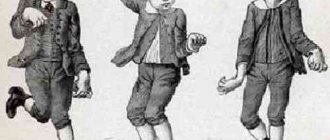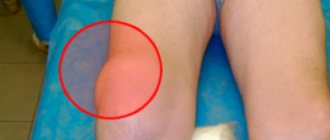Neurosis is a set of psychogenic, functional, reversible disorders that tend to last a long time. The clinical picture of neurosis is characterized by obsessive, asthenic or hysterical manifestations, as well as a temporary weakening of physical and mental performance. Neurosis is also called psychoneurosis or neurotic disorder.
The cause of neurosis in adults in most cases is conflicts (internal or external), stress, circumstances that cause psychological trauma, long-term overstrain of the emotional or intellectual spheres of the psyche.
IP Pavlov defined neurosis as a protracted, chronic disorder of higher nervous activity, provoked in the cerebral cortex by overstrain of nervous processes and exposure to external stimuli of inadequate duration and strength. At the beginning of the 20th century, the use of the clinical term “neurosis” in relation not only to humans, but also to animals led to many disputes among scientists. Basically, psychoanalytic theories present neurosis and its symptoms as a consequence of a psychological, hidden conflict.
What is a neurotic disorder
What is a neurotic disorder? It is a heterogeneous group of dysfunctions that arise as a result of acute or chronic psychological trauma. Symptoms are varied, but maladaptation, phobias, asthenia, obsessions and somatovegetative disturbances are always noted. A person's physical and mental abilities are temporarily weakened. Self-awareness and criticism persist. The diagnosis is made based on complaints, medical history and the person’s life history. To eliminate the problem, they resort to psychotherapy and medication.
Neurotic disorder is characterized
Doctors mean by neuroses a group of pathologies that arise due to the influence of mental trauma. A neurotic disorder is characterized by a deterioration in well-being, mood swings are noted, and somato-vegetative symptoms appear. In severe cases, suicidal thoughts are possible.
Causes of neurotic disorders
Doctors have different opinions regarding the catalyst for neuroses. Some believe that this condition develops due to a genetic predisposition, others – childhood psychological trauma. Children's psyche is weak, their memory is tenacious, any serious stress persists for a long time. Most of the complexes that a person suffers from in adulthood arose in childhood. Women are more susceptible to the disease.
Other causes of neurotic disorders:
- unfavorable environment, poor living conditions;
- prolonged physical overload in combination with stress;
- exhaustion of the nervous system;
- too busy work schedule;
- lack of proper rest;
- alcohol and drug abuse.
Neurotic dysfunctions occur when the body is exhausted.
Risk factors
The risk of developing neurosis in women increases in the following cases:
- abuse of bad habits;
- poor nutrition;
- lack of a work-rest schedule (a woman constantly works);
- strong mental stress;
- stress;
- the onset of menopause;
- menopause.
Classification of neurotic disorders
Disorders are divided into 3 groups:
- hysterical;
- obsessive states;
- asthenic.
This classification of neurotic disorders is not similar to practice. It does not contain approved certain and most common pathologies. The differences lead to different ways of systematizing disorders.
Types of neurotic disorders
When making a diagnosis, doctors take into account the following types of neurotic disorders.
- Anxious-phobic. The main symptom is a sharp increase in anxiety and the appearance of obsessive fears. This group includes panic attacks, simple and complex phobias, and generalized anxiety disorder.
- Obsessive-compulsive. The main symptom is the appearance of obsessive ideas and actions.
- Asthenic disorders are characterized by asthenic syndrome.
- Somatoform. Clinically, they are similar to somatic ones, but do not imply a physical basis.
- Dissociative disorders imply disorders of motor function and sensations. Previously, this disease was classified as hysterical neuroses.
The sooner the patient seeks help, the more favorable the prognosis.
Forms of neurotic disorders
There are such forms of neurotic disorders.
- The most common is neurasthenia; it is divided into 3 stages. The first phase is characterized by irritability. Mental and physical abilities are not affected. The second stage is characterized by a decrease in working capacity, a person understands this. The third phase is manifested by lethargy, reluctance to do anything, and asthenic syndrome.
- Hysterical neurosis is the second form. The disease is caused by inappropriate behavior; the person is unpredictable and extremely irritable. There are signs such as seizures, paresis, vomiting, hypotension. The patient also complains of obsessive thoughts, a “lump” in the throat, and insomnia. During an attack, a person screams, lies on the floor, can get into a fight, or injure himself.
- The third form is depressive neurosis. It is characterized by symptoms such as insomnia, bad mood, loss of the ability to feel joyful emotions, a feeling of burden, and tearfulness. There are also disturbances in heart rhythm, stomach function, slow reaction to events, sexual dysfunction, and hypotension. The patient complains of despondency, sadness appears, and a feeling of uselessness.
- Obsessive states. With it, the patient is unable to control his thoughts and actions.
- Hypochondriacal neurosis - there is a fear of a circumstance from which a person cannot find a way out, or a fear of falling ill with an incurable pathology. The condition is complemented by hysteria and obsessions.
Each form requires an individual approach to therapy.
Neurotic disorders in adults
Neurotic disorders in adults have a reversible, relatively mild course, unlike psychoses. According to statistics, the problem is detected in 20% of the population. The causes include a disorder of brain activity responsible for human adaptation. Somatic and mental disturbances appear. Patients are rarely admitted to the hospital; conservative methods are usually successful.
Neurotic disorders in children
In children, the catalyst for the development of neurosis is delays in personality development. Against the background of separation from parents, stress, loss of a loved one, psychological trauma is possible. A child who experiences these situations becomes infantile or acquires neurosis.
Neurotic disorders in children: features of occurrence and course.
1. The age of 7-11 years is considered the affective stage of personality formation. If at this time the child encounters a traumatic factor, his development as a person may be delayed. In adulthood, such people experience emotional instability; a person cannot adequately assess the situation or think about the consequences. The only and beloved children acquire hysterical traits.
2. At the age of 11-14, a teenager learns to independently assess the situation, analyze, and plan his actions. There is a subsequent development of the affective component of the personality. If at this age a stressful situation arises, neuroses are possible in the future. Such teenagers outwardly look older than their peers and are more reasonable, but subconsciously, the synchronicity of personality development is disrupted.
Attention! The most important role in the successful growth of a child is played by the relationship with parents. Those who felt overprotected in childhood and were not allowed to make their own decisions become timid and unsure of themselves. It is in this category of people that neurotic disorders arise.
Signs and features of neurosis during menopause
In adult women with menopause, symptoms of neurosis occur at 45-55 years of age. A combination of vegetative-vascular, metabolic-endocrine and neuropsychic changes occurs, the causes of which are a decrease in the hormonal activity of the ovaries and insufficient function of the higher centers of the neuroendocrine system. A woman begins to experience the fear of becoming ugly, old, unnecessary.
Menopausal neurosis refers to the general state of a woman’s psyche
Symptoms of neurosis caused by menopause are similar to those described above and include:
- emotional disturbances (mood swings, emotional instability, irritability, feelings of emptiness and hopelessness, anxiety, difficulty concentrating);
- asthenovegetative (“hot flashes”, asthenia, headache, fainting, discomfort in the chest, fluctuations in blood pressure, appetite, sleep disturbance);
- hypochondriacal (discomfort in the body, itching, fear for health, obsessive search for illness);
- hysterical (lump or spasm in the throat, feeling of body trembling, numbness of the limbs, difficulty swallowing, talking, walking, demonstrative behavior, public sobbing).
Astheno-neurotic syndrome
Astheno-neurotic syndrome is manifested by chronic fatigue, apathy, increased fatigue and irritability. This disease is complemented by loss of appetite and insomnia. Physical signs are associated with apparent heart disease. It may seem to a person that he has a slow heartbeat, or vice versa – tachycardia. No changes are observed on the cardiogram. However, the patient feels pain in the heart muscle. Stomach problems and migraines are also possible. Diagnostics involves interviewing and examining a person. An examination is being carried out for a viral infection. The prognosis is favorable, especially if the person additionally attends art therapy sessions. Drawing has a relaxing effect on the psyche, negative thoughts dissipate, and the patient feels harmony.
Neurasthenia
Neurasthenia is overwork, nervous exhaustion. It is expressed by a combination of fatigue and increased irritability. With this form of neurosis, patients are characterized by inadequate reactions to minimal stimuli, as well as the inability to suppress them. Neurosthenics may be irritated by too loud a conversation, bright light, etc.; they often complain of bursting headaches and heaviness in the head. In addition, somatic symptoms are added: loss of appetite, sweating, bloating, tachycardia, polyuria, sleep disorders (difficulty falling asleep). Neurasthenia can be hyposthenic (depressive) and hypersthenic (irritable).
Dysthymia – depressive neurotic disorder
The disease is characterized by a depressed state in the patient, which does not go away for more than 2 years. The pathology is characterized by decreased vital energy and increased fatigue. A person feels apathy and is unable to enjoy life. Self-esteem decreases and self-confidence is lost. Such people rarely share their emotions with others. The most severe consequence is suicide. The patient is referred to a psychotherapist. With timely treatment, dysthymia, or depressive neurotic disorder, is treatable.
Hysteria
Hysterical neurosis (hysteria) is a rather complex disease; it is based on behavioral characteristics that depend on the increased suggestibility and emotionality of the individual. The risk group for hysteria includes women aged 20-40 years, although this disease also occurs in men. One of the behavioral features of patients with hysterical neurosis is their desire to be the center of attention of others, to evoke admiration, surprise, envy, etc. The increased emotionality of patients affects all assessments and judgments, as a result of which they become extremely unstable and changeable.
Symptoms of neurotic disorders
Neurotic dysfunctions are characterized by instability of mood and rash actions. Patients suffer from memory impairment, problems with concentration, and a number of other clinical manifestations:
- causeless psychological stress;
- increased fatigue;
- sleep problems;
- isolation;
- fixation on problems in life;
- memory impairment;
- dizziness;
- fainting;
- migraine;
- pain in the heart muscle and joints;
- frequent urination;
- excessive sweating;
- decreased potency;
- high or low self-esteem;
- inconsistency, uncertainty;
- tearfulness;
- aggressiveness;
- suspiciousness;
- poor prioritization.
Symptoms of neurotic disorders are often complemented by increased sensitivity to light, sound, and reactions to minor temperature changes.
Signs of neurotic disorders
Signs of neurotic disorders vary by gender. In women, asthenic neurosis more often appears, characterized by aggressiveness, loss of mental and physical ability, and lack of sexual desire. During intimacy, it is impossible to relax. A woman suffering from asthenic neurosis quarrels with relatives and often loses her temper over trifles. Constant tension is fraught with the development of diseases of internal organs.
In men there are the following types:
- depressed – a person is not able to realize himself in the world of work, or adapt to sudden changes in any area of life;
- male neurasthenia - usually appears after physical or moral overstrain; workaholics are susceptible to this type.
Men and women over 45 years of age are prone to these types of diseases. They may still have problems with the functioning of their internal organs.
Neurotic disorder syndrome
The syndrome of neurotic disorders is a reflection of a traumatic circumstance and is often combined with other neurotic manifestations. The patient's mood decreases, but there is no feeling of melancholy. Usually, a bad mood is combined with emotional lability, asthenia, mild anxiety, loss of appetite and insomnia. During the day, no special fluctuations are observed, or they are mild. Mental and motor retardation, self-flagellation, and suicidal thoughts are not typical.
- Neurotic depression is distinguished from reactive depression, which is also caused by traumatic circumstances. In the second type, the symptoms reach the level of reactive psychosis - the patient is depressed, inhibited, consciousness is narrowed, and thoughts of suicide appear.
- In the case of psychotic depression, the patient wishes to die, there is gross disorientation of the personality with separation from life, sudden anosognosia, delusional ideas of self-humiliation, manic episodes. The condition can be controlled with antidepressants and a repeated course of treatment.
- Neurotic depression is characterized by the preservation of the basic personality qualities, the patient is aware of his condition. Obsessive phobias and pronounced hysterical manifestations appear.
Important! Psychotic depression is more dangerous for a person and requires immediate treatment.
Levels of neurotic disorders
Neurotic disorders occur at 3 levels: as a manifestation of individual symptoms, at the level of minor syndromes, and as specific disorders.
Levels of neurotic disorders.
- Individual symptoms. They are also present in those who do not suffer from mental disorders.
- A minor emotional disorder can be complemented by several neurotic syndromes, of which the leading one is not identified.
The patient population consists of 2 types:
- some suffer from an acute, short-term stress reaction;
- others experience long-term, chronic impairment.
Most patients recover within six months, while others recover in no less than 3 years.
How to distinguish neurosis from VSD?
Vegetovascular dystonia (VSD) and neurosis are interrelated concepts. VSD is a complex of symptoms of different localization that occur when there is a malfunction in the autonomic nervous system. And neurosis is a disorder of the central nervous system caused by the psyche (stress, depression, etc.). Since the nervous system is connected, disturbances in one department provoke malfunctions in the other.
Therefore, VSD and neurosis often imply each other. The symptoms of the conditions are similar. A distinctive feature of VSD is dystonia (spasm) of cerebral vessels.
It is difficult to distinguish between neurosis and VSD. If both conditions are present in a woman’s body, then the disorders affect not only the nervous system, but also other organs.
Diagnosis and treatment of neurotic disorders
A person should contact a psychologist or psychotherapist. Diagnostics requires an integrated approach.
The color technique is widely used.
- All shades take part in it. Neurosis-like syndrome is noted when a person selects or repeats gray, purple, brown or black.
- With hysterical neurosis, the patient chooses 2 colors - purple and red. This also indicates low self-esteem.
To determine the symptoms, a test is carried out - it makes it possible to identify the presence of chronic fatigue, anxiety, and self-doubt. Diagnosis and treatment of neurotic disorders are closely interrelated.
Drug therapy is used in the first stages to relieve internal tension and eliminate insomnia. Antidepressants and tranquilizers are widely prescribed. Depending on the severity and duration of the clinical picture, the doctor prescribes drugs from different groups to the patient:
- non-selective – Amitriptyline, Imipramine;
- selective influence - Maprotiline, Fluoxetine;
- sedative antidepressants – Doxelin, Azafen;
- balanced – Sertalin, Tryptophan;
- stimulants - Heptral, Bupropion.
Obsessive states are well relieved by drugs from the SIDS group - Prozac, Paroxetine, Escitalopram. Frequently prescribed tranquilizers include Phenazepam, Tofisopam, Meprobamate. All medications are prescribed in a short course of 5-7 days, sometimes extended to 10.
Important! If a person self-prescribes medications, the disease may transform and the condition may worsen.
Psychotherapy for neurotic disorders
To achieve maximum effect, doctors recommend supplementing drug treatment with rational, cognitive psychotherapy. The main objective of this technique is to eliminate the consequences of a stressful situation so that the general condition of a person improves and the symptoms of neurosis are eliminated. The doctor discusses the cause of the problem and works through the traumatic circumstances. The patient learns relaxation techniques, the ability to level out negative emotions and complexes. The most difficult thing to eliminate is negative attitudes given by parents. A person must show his will, diligence, and do his homework. Typically, psychotherapy for neurotic disorders consists of 7-15 sessions, depending on the degree of complexity of the problem. In severe cases, the patient is admitted to the department of borderline mental disorders.
Medicines
Photo: stressx.ru
For patients with mild forms of neurosis, drug therapy is not indicated. In severe and moderate disorders, medications play a supporting role. They help to achieve sufficient psychological stability for productive psychotherapeutic work and consolidate the results obtained. The following groups of drugs are used:
- Antidepressants . Fluoxetine, sertraline, citalopram, clomipramine, imipramine and their analogues form the basis of drug therapy for neuroses. The drugs are selected taking into account the prevailing symptoms and are recommended to be taken for at least several months. Due to the individual characteristics of the body and possible side effects, during the selection process it is sometimes necessary to change the medication or the prescribed dose several times.
- Tranquilizers . In mild cases, mild remedies are prescribed, for example, Mebikar. For severe symptoms, benzodiazepine drugs are preferred. Used short-term at the initial stage of taking antidepressants. Not indicated for long-term use due to the possible development of dependence.
- Other drugs . To increase the body's resistance, adaptogens and multivitamin complexes are used. Among the over-the-counter medications to regulate the emotional state, you can take Novo-Passit, Persen, Fitosed, Trivalumen.
Prevention
It is possible to prevent the development of neurotic disorders by leading a healthy lifestyle. It is important to sleep 7-8 hours a day, go to bed before 1.00, resolve internal conflicts in a timely manner, and avoid stress. If a person’s work involves difficult situations or psychological overload, it is worth thinking about changing the sphere of work.
Prevention of neuroses: effective tips.
- Do not abuse alcohol or smoking. Intoxication provokes a deterioration in adaptive capabilities, and various diseases appear. When drinking alcohol regularly, the psyche suffers and a severe hangover occurs.
- The food menu should always include a lot of vegetables, fruits, lean meats and fish. It is advisable to rely on dairy products and take a course of vitamins in the off-season. Overeating is also dangerous; you need to consume food in moderation.
- Music. This is an effective prevention method that involves listening to calm melodies. This could be the sound of rain or sea, falling snow and other natural phenomena. You should listen to soothing music before bed, or after a stressful situation. It can be found on YouTube, social networks, it is advisable to record it on a smartphone so that you can always relax.
- It is important to exercise in moderation. Physical activity is the key to mental health. It is advisable to do exercises every morning or evening, you can join a gym, go to the pool 2-3 times a week.
- Plan your actions, act according to the plan. Then there will be fewer stressful situations if a person does not let everything take its course.
- Treat all diseases in a timely manner. Regular pain causes emotional stress.
- It should be remembered that family conflicts, especially constant ones, cause serious stress. Family is the rear, not the battlefield. If there are problems in your personal life and they are not resolved, it is better to change your partner.
If it was not possible to prevent neurosis, you need to seek help in a timely manner. Then the chances of leveling out the negative psychological state are maximum.
How to quickly calm down on your own?
If a woman cannot urgently see a doctor, then she can carry out sedative actions on her own. An optimistic attitude is required to calm down. Calming requires patience, since irritability cannot be overcome in 5 to 10 minutes. Relapses may appear at first.
In order for the body to get used to new conditions, time must pass. The main task of self-calming is a different perception of reality. That is, you need to first assess the situation and then succumb to emotions. Don't forget about activity . With neurosis, a person experiences stress and anxiety. Therefore, a large amount of adrenaline enters the blood.
The body's heart rate increases and the pupils dilate. The hormone acts in the body and the brain sends a signal that you need to run and save yourself. To reduce the effect of adrenaline, it is necessary to expend the energy received. For example, go to the gym, ride a bike. There are many household activities that require energy expenditure - cleaning, gardening.
The famous psychotherapist Vladimir Levi had his own theory about self-soothing during neurosis. To relax faster, you need to tense up a lot. Then spend energy in the gym. You need to force yourself to strain, even if you don’t want to do it. You can scream, jump, but the main thing is to do it with all your might.
After tension, the woman becomes relaxed and her mood improves. The method is not suitable for long-term neuroses. But if the condition appears suddenly, the temper decreases.
If neurosis appears as a result of routine, then some changes need to be made. For example, re-paste the wallpaper, paint the walls a different color. If a woman wants to go to a certain country on vacation, she can take a vacation and go on a trip.
What happens if a neurotic disorder is not treated?
Neuroses can cause complications if left untreated. Many people ignore therapy and do not go to doctors. Post-Soviet stereotypes that going to a psychotherapist is shameful still live in people’s heads. Such negligence entails irreversible changes in the psyche.
What happens if a neurotic disorder is not treated:
- increased symptoms;
- the patient becomes hysterical and hypersusceptible;
- self-esteem suffers;
- other chronic diseases appear;
- the risk of catching a cold increases;
- the formation of an explosive personality that does not tolerate returns, is aggressive, and concentrates only on the negative.
A person becomes a hypochondriac, his personality is destroyed. The last stage is caused by complete apathy, the person does not get out of bed, and may refuse food. The patient is no longer able to do without medications or control his emotions. High risk of suicide. It is extremely difficult to treat this condition; it can lead to more serious mental pathologies. You cannot do without long-term psychotherapy, taking medications and staying in a neurosis clinic.
Consequences of long-term neuroticism
Women should remember that it is impossible to “go crazy” from neurosis, but even an advanced nervous disease requires more money and effort to recover.
Long-term neurosis leads to the development of the following consequences:
- development of depressive states against the background of anxious neurosis and fixation on the somatic state, up to suicidal intentions;
- deepening of obsessive states and hypochondria;
- emergence or exacerbation of chronic diseases (arterial hypertension, diabetes mellitus, peptic ulcer, bronchial asthma, skin problems);
- decreased ability to work up to the point of leaving work;
- worsening intra-family conflicts up to the breakup of the marriage.










